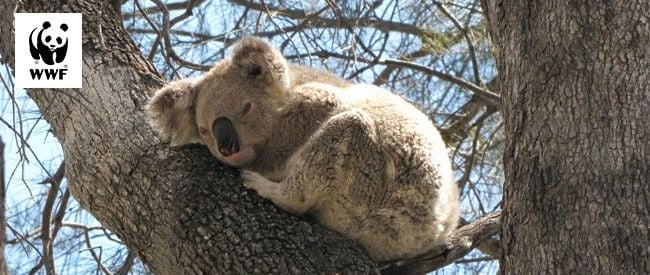Koalas need our help as bushfires rage in Australia
Posted on
|
Wildfires often hit the headlines now, but the media are slow to consider the impact they have on wildlife. Sometimes they say “nobody died” and I really wonder if they are aware of the millions of animals who have been injured or, worst, died in the fires. And at the moment wildfires are raging, in California and New South Wales. In New South Wales, they are burning across Port Macquarie. It’s estimated that between 20,000 to 48,000 koalas live both here and in Queensland. They are heading for extinction here as early as 2050. It’s feared that a large number of koalas may have died in the flames. Others will be homeless as their trees have burnt down; more will be suffering from smoke inhalation or burns. WWF Australia urgently needs all our support to help restore koala habitat and to care for injured wildlife. Every single koala matters. Please help koalas today and help WWF Australia plant the first 10,000 trees WWF have launched a plan to save koalas and to help protect and restore the trees they call home. The WWF Plan is called Two Billion Trees, and it’s a commitment to secure two billion trees over the next decade. These will provide vulnerable wildlife with safe homes by: Whatever the outcome for koala numbers, their habitats will need to be restored, both for koalas and other wildlife. The thing about koalas is that they are dependent on trees. They need them for their food, their shelter and their safety. Trees make a difference to koalas. Without trees, they have nowhere to call home. So the area where the effort is to be concentrated is a koala triangle, between south west Sydney, Gennedah and Noosa. It’s the heartland of Australia’s healthiest wild koala populations, but it’s threatened, not just by bushfires but by development. |
